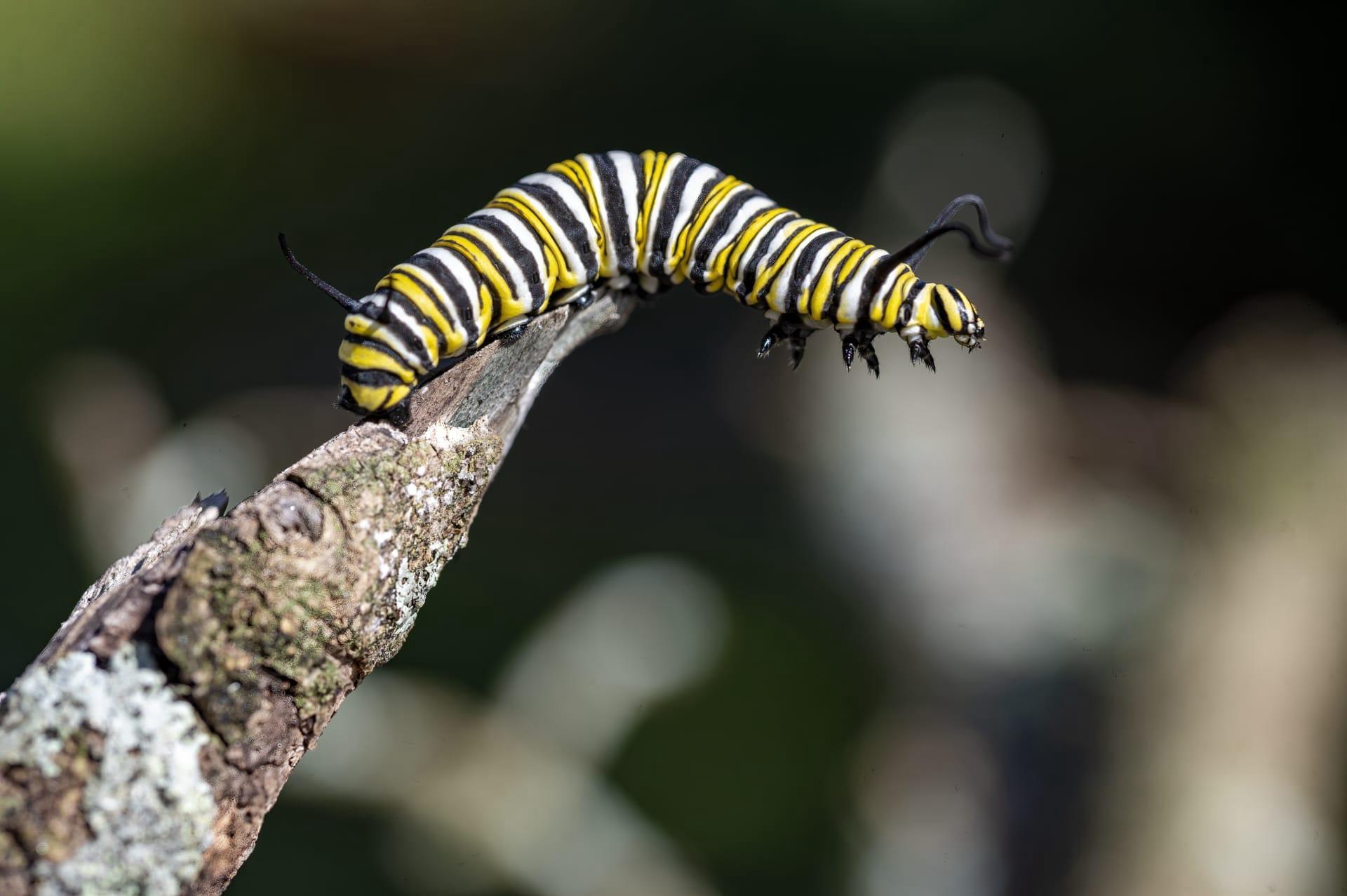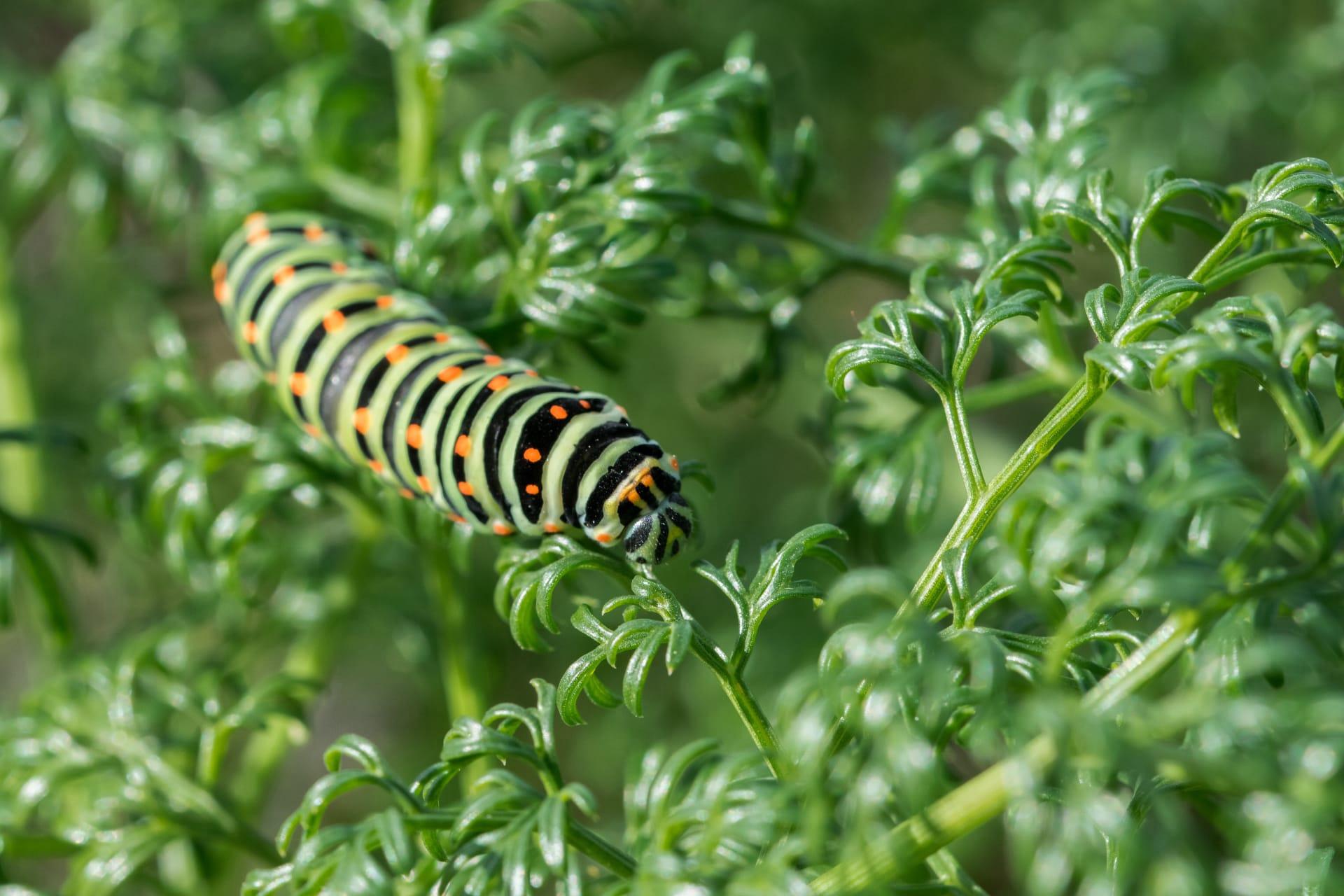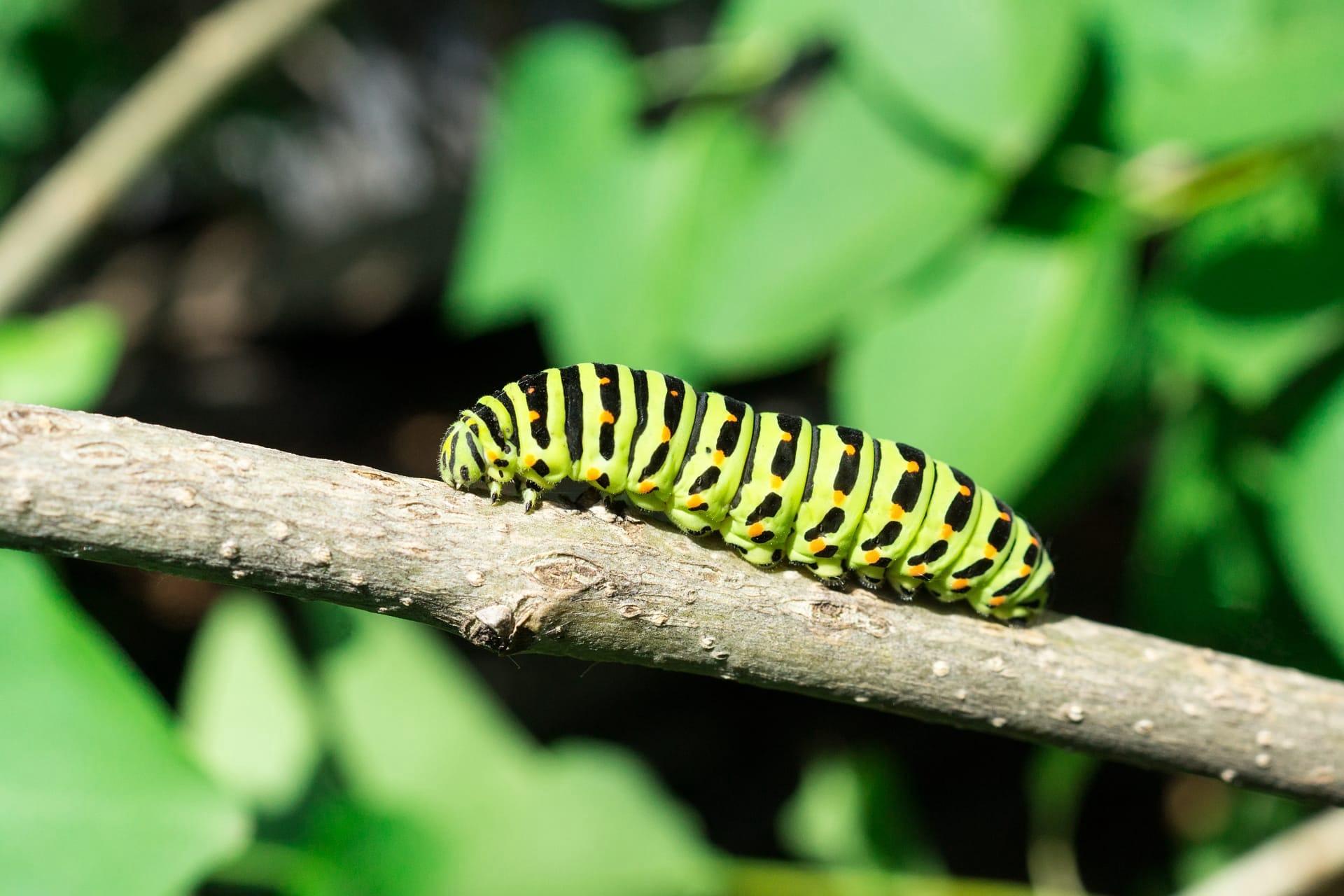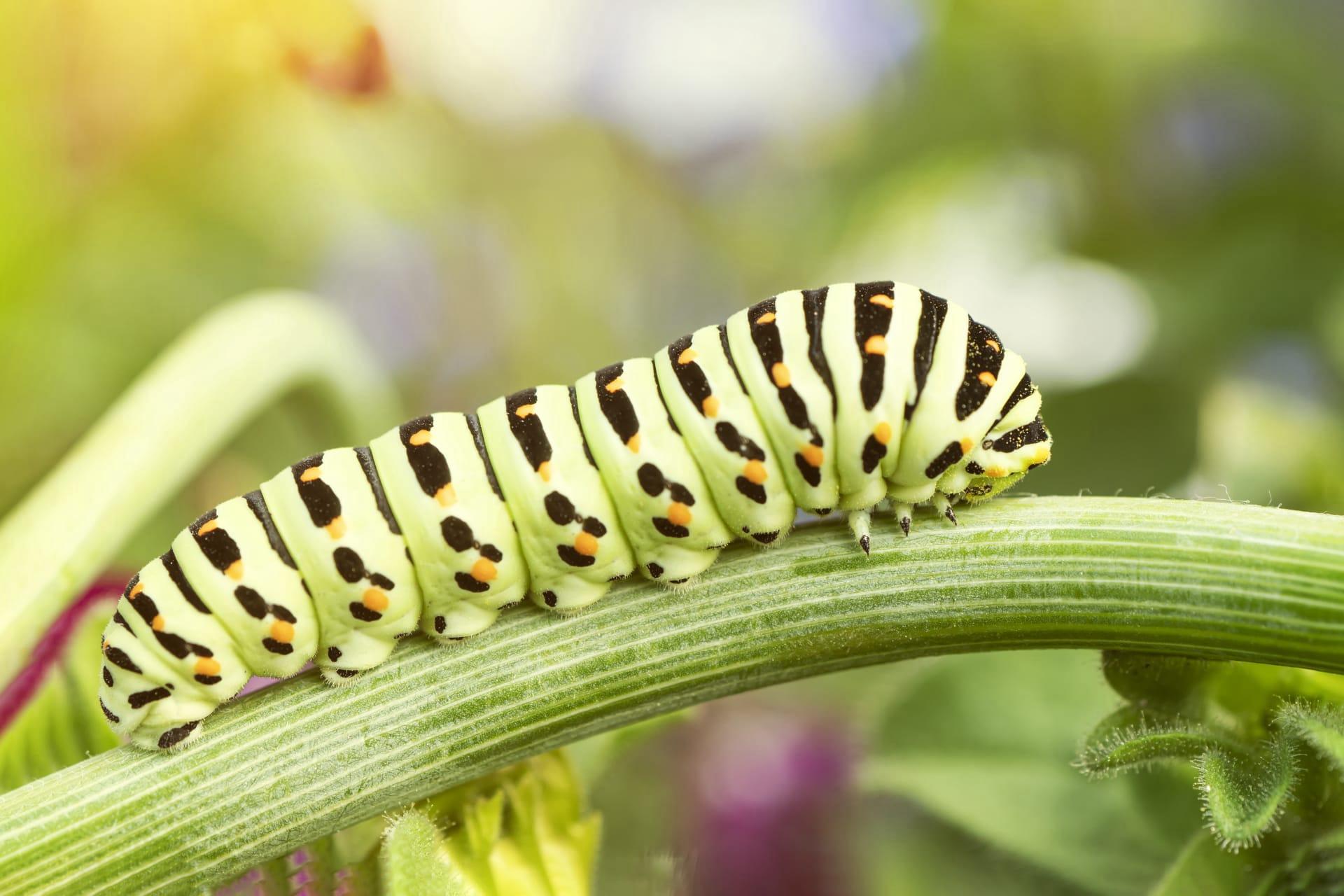Monarch Butterfly Caterpillar Trivia
- Home /
- Trivia Question /
- Animal /
- Monarch Butterfly Caterpillar Trivia
1
Question: What do Monarch butterfly caterpillars look like and how can they be identified?
Answer: Monarch caterpillars are striking in appearance, easily recognized by their black, white, and yellow striped pattern. They have a series of thin, black bands encircling their bodies, interspersed with broader yellow and white bands. These caterpillars measure about 2 to 3 inches in length when fully grown. Additionally, they possess a pair of black, tentacle-like antennae at each end, which are sensory organs, not actual antennae.
Question: What is the diet of a Monarch caterpillar and how does it impact their survival?
Answer: Monarch caterpillars exclusively feed on milkweed plants, which contain toxic compounds called cardenolides. These toxins are ingested by the caterpillars and provide a defense mechanism, making them distasteful and poisonous to potential predators. The caterpillar consumes large quantities of milkweed leaves, enabling it to grow rapidly - sometimes increasing its body mass by over 2,000 times within a span of about two weeks.

2
Question: Is it true that Monarch caterpillars are poisonous to all predators?
Answer: While Monarch caterpillars are toxic due to their milkweed diet, not all predators are deterred. Certain bird species, like the black-backed oriole and the black-headed grosbeak, have developed a tolerance to the toxins and can safely consume Monarch caterpillars. However, most birds and mammals avoid them due to their toxicity and distinct coloration, which serves as a warning sign.
Question: Do Monarch caterpillars harm milkweed plants by eating them?
Answer: Contrary to the belief that caterpillars might be harmful to milkweed, their feeding actually promotes healthier and bushier growth in these plants. Milkweed can tolerate and recover from substantial leaf loss, and the presence of Monarch caterpillars often stimulates new growth, benefiting the plant’s overall health and longevity.

3
Question: How long does the caterpillar stage of the Monarch butterfly last?
Answer: The Monarch caterpillar stage typically lasts about 10 to 14 days. During this time, the caterpillar undergoes five stages of growth, known as instars, each marked by molting its skin. With each molt, the caterpillar grows significantly, preparing for its transformation into a chrysalis.
Question: Do Monarch caterpillars engage in social behaviors with other caterpillars?
Answer: Monarch caterpillars are primarily solitary and do not exhibit social behaviors typical in some other caterpillar species. They may be seen feeding on the same milkweed plant, but this proximity is due to the availability of food rather than a social inclination. Each caterpillar focuses on consuming enough milkweed to sustain its rapid growth and development.

4
Question: Can Monarch caterpillars survive on plants other than milkweed?
Answer: Monarch caterpillars are specialist feeders and rely exclusively on milkweed species for survival. They cannot digest other types of plants, making milkweed critical for their development and survival. This specialized diet is also what makes Monarch caterpillars and butterflies toxic to many predators.
Question: What role do temperature and climate play in the development of Monarch caterpillars?
Answer: Temperature and climate have significant impacts on the development of Monarch caterpillars. Optimal temperatures for their growth range between 77°F to 86°F (25°C to 30°C). In cooler temperatures, their development slows down, prolonging the caterpillar stage, while excessively high temperatures can be detrimental. Additionally, climate conditions affect the availability of milkweed and the timing of migration in adult butterflies.

5
Question: How does the Monarch caterpillar's body change as it prepares to become a chrysalis?
Answer: As the Monarch caterpillar prepares for metamorphosis, its body undergoes remarkable changes. It stops eating, empties its gut, and its color pattern becomes duller. The caterpillar then finds a suitable spot, hangs upside down in a J-shape, and sheds its skin one final time to reveal the chrysalis underneath, marking the beginning of its transformation into a butterfly.
Question: Are Monarch caterpillars active throughout the year?
Answer: Monarch caterpillars are not active year-round. Their activity is closely tied to the seasonal migration patterns of adult Monarch butterflies. In North America, caterpillars are typically found from spring through fall, coinciding with the availability of milkweed. In winter, adult Monarchs migrate to warmer climates, and caterpillar activity ceases until the following spring.